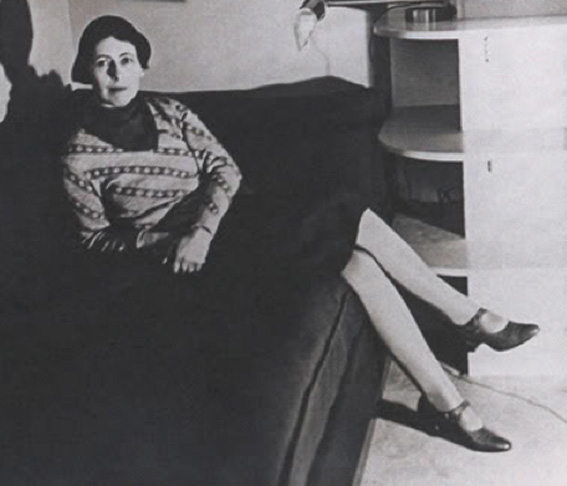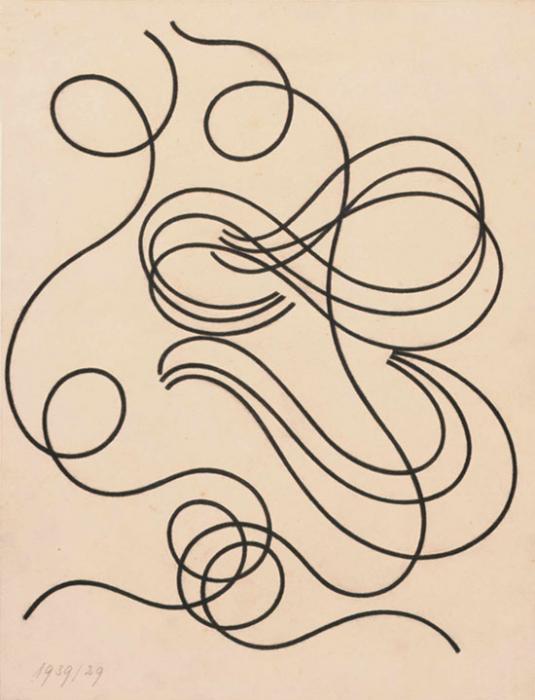

Toward the end of her life Sophie Taeuber appeared to be
bathed in a surprising and enchanting light, as if she sensed the
imminent goal she was about to reach. She always knew the right path
to take, just as a traveler standing on a tower surveys all the roads
of a countryside. Forces came spurting from her that metamorphosed
the everyday universe. Sometimes she would radiate an efflorescent
landscape which, permeating whatever country we happened to be in,
spread out into a multiple and fragrant gamut. She lived, endlessly
linked to the reality of dream. Only fairy tales of a perfect beauty
could reflect her true splendor.
In the world of dream and memory, an impenetrable darkness thrives
and a pure light flourishes. But the two never alternate like earthly
day and night: they blend into infinity. The dead and the living,
like flames and waves, cross that world. Weightlessly they cross all
space and time. They emit phantoms similar to themselves, multiplying
like echoes, amicably joining them or hostilely pursuing them. Joys and
disconcerting suffering are the results. They mutually exchange their
aspects. They disguise themselves. The dead meet and are alive; the
living have been resting in peace for a long time. If we encounter
these dead in our unreal everyday world, they laugh and act as if
nothing had happened and talk to us about trivia. We too, everyday
men that we are, unite with the infinite in that world.
She painted the soul of dreaming, the invisible reality. She drew
luminous geometrical messages. She drew lines that sounded bottomless
depths. She drew serious lines, laughing lines, lines of an incandescent
white, whirling dances of lines, cogged whirlwinds, trellises of lightning.
She stirred up lines and made them blaze around sheaves of lines until
the lines and the sheaves flared up into blazes of flowers. She made
lines whirl around clotted points, halt abruptly, meditate serenely, and
unite in shapes that scintillated like a day in spring. She painted the
radiant golden skeleton of the stars. She made dots blush modestly.
She made dots grow into bays, giant fruits, and suns. She made them
disintegrate into ashes. She sowed white flower beds of pearls and
drew moons from them. She drew the roads of happy wings. She painted
life with her eyes closed, singing inwardly. She drew the outlines
of silence.
Most frequently I meet Sophie under Mediterranean olive trees.
There she plays, turns about, leaps away, waves her arms as a bird
beats its wings, turns again, and comes to me. Another time she offers
me a huge bunch of grapes, each grape a weeping eye. Her limpid gaze
meets my awkward glances. She had dreams she never wanted to tell me
about. She hid them behind exaggerated and noisy farces. She would
walk in a circle and mimic a mute trumpet, puffing diligently, and
absolutely refused to tell me what she had dreamed.
Am I dreaming when I catch sight of Sophie, luminous and calm,
against a background of shiny white petals or a shiny white star?
Am I dreaming when I hear Sophie speaking in me and we converse?
Am I dreaming when I see Sophie, alive serenely dead, and dead
serenely alive, engraved in a gem that I hold in my real hands?
Both memory and dream flow into one another like powerful rivers.
Whatever develops in them exists eternally. Whatever happens in
the unreal everyday world is replete with coarse malice and suffering,
and then passes. That is why Sophie always acted decisively and
rigorously in that world. She never stumbled into the traps of
unreality. The world of dream and memory is the real world. It is
the blood relative of art, shaped on the edge of earthly unreality.
